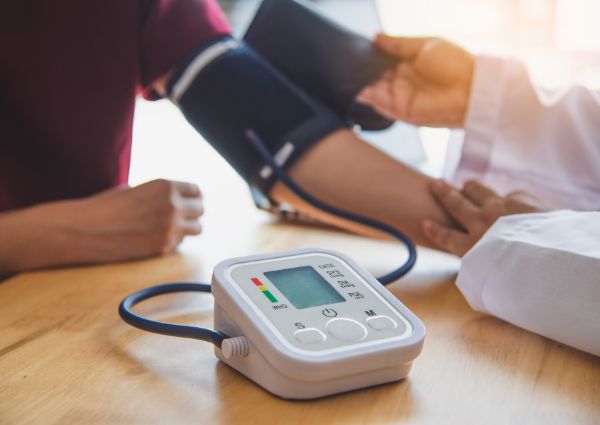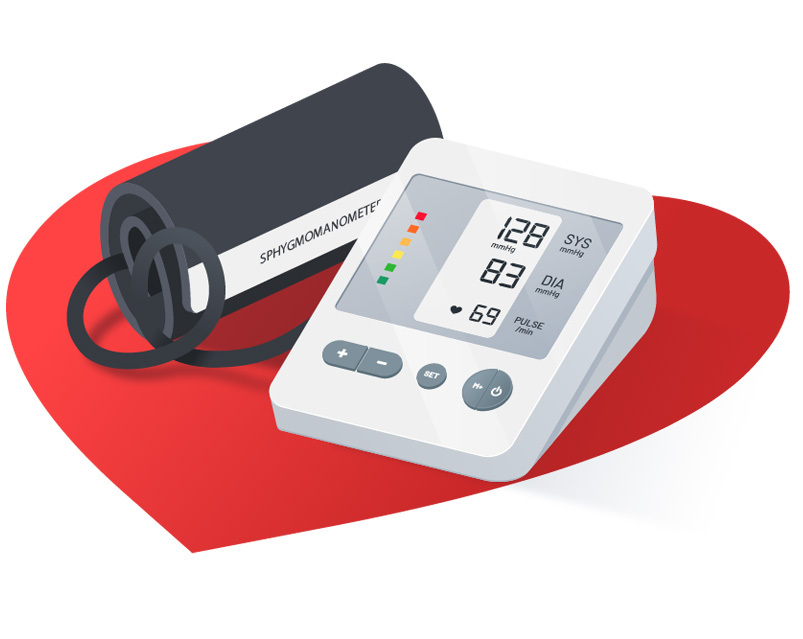Recognizing the Relevance of the ABPM Test in High Blood Pressure Administration
Ambulatory Blood Pressure Monitoring (ABPM) is a crucial tool in taking care of high blood pressure. By providing continual blood pressure readings over 24 hours, it provides insights that conventional measurements can not. This approach can disclose problems such as white layer syndrome and concealed hypertension. Recognizing these nuances is vital for efficient individual care. As medical care evolves, the effects of ABPM fit personalized therapy methods come to be increasingly substantial. What does this mean for the future of hypertension monitoring?
What Is Ambulatory Blood Pressure Monitoring (ABPM)?
Ambulatory Blood Pressure Monitoring (ABPM) is a technique that allows for the continuous dimension of blood pressure over a 24-hour period while individuals take part in their day-to-day activities. This innovative method includes using a portable gadget that instantly takes blood pressure readings at set periods, generally every 15 to half an hour. ABPM supplies a comprehensive profile of blood pressure fluctuations throughout the day and night, recording variations that might be missed throughout typical workplace measurements.It is specifically beneficial for diagnosing problems such as hypertension and white coat syndrome, where people display elevated readings only in professional settings. By providing real-time data, ABPM boosts the precision of hypertension analyses and aids in customizing therapy plans. The understandings obtained from this monitoring may result in far better management of cardio health and wellness, enhancing the importance of ABPM in modern-day medical method.
Exactly How ABPM Varies From Conventional Blood Pressure Dimensions
While traditional blood pressure measurements typically count on analyses absorbed a scientific setting, ABPM offers an extra comprehensive technique by assessing blood pressure over a full 24-hour duration. Traditional approaches commonly generate a limited variety of analyses that might not catch fluctuations in blood pressure throughout the day. On the other hand, ABPM permits for continuous monitoring, providing insights into variations during various activities, such as sleeping and exercising.Additionally, traditional measurements may be affected by the patient's anxiousness during a doctor's browse through, referred to as "white coat disorder," possibly bring about wrongly high analyses. ABPM reduces this issue by gathering information in a familiar setting, producing an extra precise depiction of an individual's blood pressure. The gadget typically takes measurements at normal intervals, ensuring extensive data collection. This fundamental distinction highlights the significance of ABPM in offering a total image of a patient's blood pressure account.
Advantages of ABPM in High Blood Pressure Monitoring
The usage of Ambulatory Blood Pressure Monitoring (ABPM) offers considerable advantages in taking care of high blood pressure. It uses precise and continuous blood pressure analyses, assisting to determine problems such as white layer syndrome. This accurate information enables medical care providers to make more individualized therapy changes customized to specific client requirements.
Precise Blood Pressure Monitoring

Recognizing White Layer Syndrome
Ambulatory Blood Pressure Monitoring (ABPM) plays a considerable function in determining white layer syndrome, a sensation where patients show raised blood pressure analyses in a medical setting however keep normal degrees in their everyday lives. This condition can lead to misdiagnosis and unnecessary therapy, complicating high blood pressure administration. ABPM provides a complete assessment of blood pressure over a 24-hour period, catching variants that take place during everyday tasks and sleep. By contrasting these readings to clinic measurements, doctor can compare real high blood pressure and white layer disorder. Inevitably, recognizing this syndrome is vital for tailoring proper treatment methods and protecting against overtreatment, ensuring that patients obtain treatment that properly shows their blood pressure standing outside the medical atmosphere.
Individualized Treatment Changes
Enhancing hypertension monitoring via tailored therapy changes ends up being feasible with the insights obtained from ABPM. This approach provides continual blood pressure monitoring, enabling health care companies to identify patterns and variations that may not be noticeable throughout common office brows through. By recognizing a client's special blood pressure profile, medical professionals can tailor therapy plans that take into consideration variables such as medicine efficiency, way of living influences, and individual feedback to therapy. This customized approach not just boosts person adherence yet additionally improves total outcomes by minimizing the risk of problems connected with unrestrained hypertension. Inevitably, making use of ABPM empowers clinicians to make enlightened decisions, bring about extra efficient management techniques that align with each individual's particular requirements.
Recognizing White Layer High Blood Pressure and Masked High Blood Pressure
White coat high blood pressure takes place when clients show elevated blood pressure analyses in a professional setup because of stress and anxiety, while their measurements are typical in various other atmospheres. In contrast, covered up high blood pressure describes people whose blood pressure is typical during medical gos to but raised in life. Comprehending these two sensations is vital for accurate hypertension management and therapy choices.
Specifying White Coat High Blood Pressure
High blood pressure monitoring usually includes comparing various blood pressure problems, especially white layer hypertension and concealed hypertension. White coat high blood pressure is defined by elevated blood pressure analyses in professional settings, usually because of anxiety connected with clinical atmospheres. People with this condition typically show regular blood pressure degrees outside of these settings. This sensation can cause misdiagnosis and unnecessary therapy if not appropriately recognized. It is critical for doctor to identify this condition to stay clear of overtreatment and to guarantee exact hypertension administration. ABPM test in Bangalore. Making use of ambulatory blood pressure monitoring (ABPM) can aid set apart white layer hypertension from continual hypertension, allowing much more reliable and customized therapy techniques for individuals experiencing this distinct blood pressure feedback
Understanding Masked Hypertension
Masked More hints high blood pressure poses a considerable obstacle in Going Here high blood pressure administration, as it often goes undetected in clinical setups. This condition takes place when an individual's blood pressure analyses are normal during clinical check outs yet elevated at home or throughout daily tasks. Unlike white coat high blood pressure, where stress and anxiety in a professional atmosphere causes temporary spikes in blood pressure, covered up high blood pressure can cause unrecognized cardio dangers. Clients might think they have regular blood pressure, disregarding required way of living changes or treatments. Identifying covered up high blood pressure is important, as it can lead to major wellness difficulties over time. Ambulatory Blood Pressure Monitoring (ABPM) is an effective device for detecting this problem, enabling health care experts to provide prompt intervention and improve client results.
The Function of ABPM in Personalized Treatment Plans
As healthcare carriers significantly identify the importance of personalized treatment, the application of Ambulatory Blood Pressure Monitoring (ABPM) has ended up being important in tailoring therapy prepare for clients with hypertension. ABPM allows for continual blood pressure measurement over 1 day, disclosing patterns that might be missed throughout common office visits. This detailed data offers understandings right into a client's blood pressure variability and nighttime levels, which are vital for recognizing general cardiovascular risk.
Translating ABPM Results: Recognizing Patterns and Fads
Translating the arise from Ambulatory Blood Pressure Monitoring (ABPM) requires an eager understanding of numerous patterns and patterns that emerge from the collected data. Clinicians evaluate the 24-hour blood pressure profile, comparing daytime and nighttime analyses to recognize prospective white-coat high blood pressure or masked hypertension. A regular elevation in daytime readings might indicate poorly controlled high blood pressure, while nighttime dips can represent efficient blood pressure management or nocturnal hypertension, which postures additional cardiovascular risks.Trends with time, such as sustained boosts or variations, are likewise important. Irregularity in readings can suggest underlying issues, such as stress or medicine non-adherence. In addition, the analysis of blood pressure patterns in connection to everyday tasks can offer understandings into lifestyle aspects impacting hypertension. By thoroughly interpreting these results, health care professionals can tailor therapy approaches to improve individual end results in hypertension monitoring, inevitably bring about far better cardiovascular health.
The Future of Blood Pressure Monitoring and Hypertension Care
Arising technologies and technologies are positioned to reinvent blood pressure monitoring and high blood pressure treatment in the coming years. Wearable devices furnished with innovative sensors are anticipated to give constant, real-time blood pressure analyses, allowing for more individualized treatment routines. These gadgets will not only boost individual engagement however additionally promote remote monitoring by doctor, bring about timely interventions.Artificial intelligence and maker understanding algorithms will play an essential duty in examining person information, identifying patterns, and anticipating hypertension-related problems. This predictive ability can lead to more proactive management approaches. In addition, telehealth services will likely increase, enabling patients to seek advice from experts and obtain tailored recommendations without the requirement for in-person visits.Furthermore, advancements in mobile applications may equip clients to track their anchor blood pressure independently, fostering a sense of ownership over their health. Generally, the future of blood pressure monitoring and hypertension care shows up encouraging, with innovation at its forefront.
Often Asked Questions

For how long Does an ABPM Test Generally Last?
The ABPM test usually lasts 1 day. During this duration, a mobile gadget procedures blood pressure at normal intervals, giving comprehensive data on an individual's blood pressure patterns throughout daily activities and sleep.
Can ABPM Be Utilized for Children and Teens?
ABPM can without a doubt be made use of for kids and teens - ABPM test in Bangalore. It supplies beneficial understandings into their blood pressure patterns, aiding healthcare service providers precisely detect and handle hypertension in more youthful populations, advertising far better long-lasting wellness results

What Should I Avoid Prior To Taking an ABPM Test?

Prior to taking an ABPM examination, individuals should prevent high levels of caffeine, pure nicotine, and difficult workout, as these can temporarily boost blood pressure readings. In addition, it's a good idea to avoid using tight garments that may hinder dimension precision.
Just how Typically Should I Undertake ABPM Screening?
The regularity of ABPM testing varies based upon individual health needs. Normally, it is suggested every 6 to twelve months, especially for those with unchecked high blood pressure or significant modifications in blood pressure drug. Routine monitoring help effective administration.
Is ABPM Covered by Insurance Strategies?
The protection of ABPM testing by insurance policy plans varies substantially. Patients must consult their specific insurance service providers to figure out qualification and any kind of possible out-of-pocket expenditures related to this analysis procedure for high blood pressure monitoring.